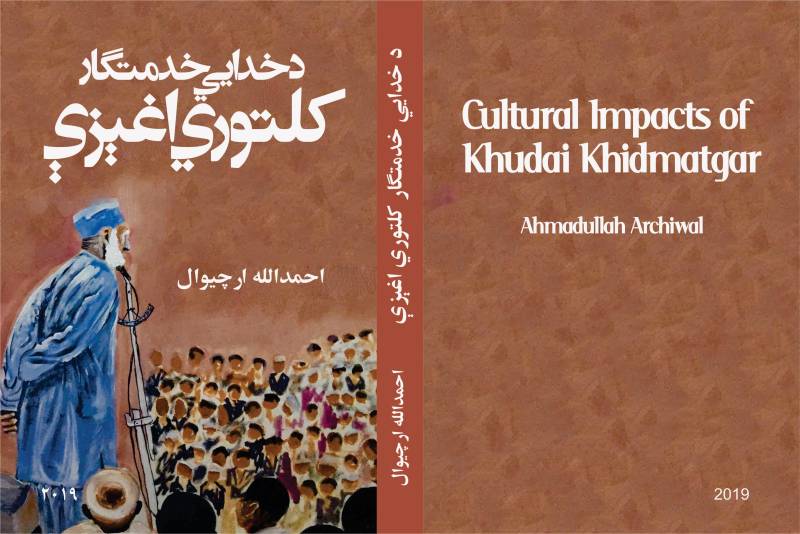
By and large considered a political movement, Khudai Khidmatgar initially started as a cultural reformist group in 1929 under the leadership of Abdul Ghafar Khan in present-day Khyber Pakhtunkhwa (KP). The movement eventually diverted to politics.
The idea behind its formation was to fight the societal problems among Pashtuns in the province, reform their lives and restore their cultural identity.
However, the movement later changed its trajectory and was forced to resort to politics.
Most of the existing studies on the movement discuss its political dynamics, but there have also been studies that focus on cultural footprints of Khudai Khidmatgar.
This tilt towards political aspect of the movement has created a situation where majority of the people consider the movement solely a political one, thereby ignoring its cultural aspect.
Given the strong cultural footprints that the movement has had, it is important to investigate its cultural impacts and then highlight them.
Qualitative in nature, the book mainly relies on primary and secondary resources supplanted by my observation. Borrowed from Professor Najib, I have relied on the definition of culture as manmade environment for this study. The whole discussion about culture revolves around the above definition. Under this umbrella definition, I have discussed the impacts of the movement on the Pashto prose and poetry, women, economy, drama and music, their schooling and education, journalism, and more importantly the Pashtuns’ attitude towards power, politics, violence, and their customs.
The book tries to respond to the fundamental questions of whether the movement have had any impact on the Pahtuns’ culture, and if yes, what effects they were. How did the movement affect Pashtun way of life, their language, their literature, their attitude towards power, their politics towards each other, and their cultural identity?
Just like studying impacts of every other social movement, studying cultural impacts of Khudai Khidmatgar is also associated with methodological challenges. There is no such yardstick that can measure intensity of the impact from one side and cover all such impacts from the other side.
Since some of the impacts that were triggered by the movement are still felt and seen after 90 years, defining a time frame that covers the era under study also poses challenges. Moreover, scope of the study to define its limits is another serious methodological problem associated with it.
In order to overcome some of the stated problems, I relied heavily on anecdotes in the secondary sources. However, the book will help address the methodological intricacies in studying the cultural impacts of Khudai Khidmatgar in future. It will serve as a reference for those who are interested in digging the topic further.
The idea behind its formation was to fight the societal problems among Pashtuns in the province, reform their lives and restore their cultural identity.
However, the movement later changed its trajectory and was forced to resort to politics.
Most of the existing studies on the movement discuss its political dynamics, but there have also been studies that focus on cultural footprints of Khudai Khidmatgar.
This tilt towards political aspect of the movement has created a situation where majority of the people consider the movement solely a political one, thereby ignoring its cultural aspect.
Given the strong cultural footprints that the movement has had, it is important to investigate its cultural impacts and then highlight them.
Qualitative in nature, the book mainly relies on primary and secondary resources supplanted by my observation. Borrowed from Professor Najib, I have relied on the definition of culture as manmade environment for this study. The whole discussion about culture revolves around the above definition. Under this umbrella definition, I have discussed the impacts of the movement on the Pashto prose and poetry, women, economy, drama and music, their schooling and education, journalism, and more importantly the Pashtuns’ attitude towards power, politics, violence, and their customs.
The book tries to respond to the fundamental questions of whether the movement have had any impact on the Pahtuns’ culture, and if yes, what effects they were. How did the movement affect Pashtun way of life, their language, their literature, their attitude towards power, their politics towards each other, and their cultural identity?
Just like studying impacts of every other social movement, studying cultural impacts of Khudai Khidmatgar is also associated with methodological challenges. There is no such yardstick that can measure intensity of the impact from one side and cover all such impacts from the other side.
Since some of the impacts that were triggered by the movement are still felt and seen after 90 years, defining a time frame that covers the era under study also poses challenges. Moreover, scope of the study to define its limits is another serious methodological problem associated with it.
In order to overcome some of the stated problems, I relied heavily on anecdotes in the secondary sources. However, the book will help address the methodological intricacies in studying the cultural impacts of Khudai Khidmatgar in future. It will serve as a reference for those who are interested in digging the topic further.
